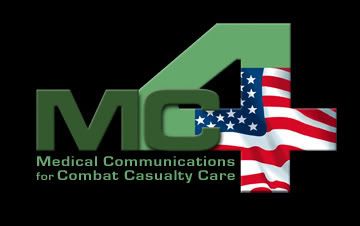I just completed the system administrator (SA) training at Al Assad, Iraq. I think that if the providers received a brief on what MC4 does before they deployed, it would be a great help to the setup and use of the system. There were several things that I didn't know about the capabilities of MC4 that I will now be able to implement when I get back to my forward operating base.
The training that I received at Fort Carson, Colo., was nowhere near the total capacity of what the medical systems are doing in theater. The training lab at Al Assad should be an example for the training classes in CONUS. During new equipment training it is great to go over the programs but you don't get the experience of using all the systems. Some applications, such as Theater Medical Data Server (TMDS) and Joint Medical Workstation (JMeWS), were not even covered during my initial training. Now I can access patient notes from level 2 and 3 facilities that didn't usually make it back to CONUS with the patients.
This system is a great improvement over the paper trail that was used in the past. If we could get the physicians to train on the applications, I don't think that there would be so much angst about the difference between CHCS II T (AHLTA-T) and AHLTA.
It seams that the physicians that talk badly about MC4 do not understand the complexity of the system or they have never used MC4 in theater. My physicians love with the system because it means completing a lot less paperwork even though they do not fully understand the capabilities of Theater Medical Information Program (TMIP) yet. When I get back and teach them what they can do, they're not going to want to go back to AHLTA.
Monday, August 27, 2007
Friday, August 24, 2007
Comments From the Field
SPC James Elliott, 1st Infantry Division
The MC4 service is great. They are the best. I am so grateful to have them.
SSG Muriel Nash, 352nd Combat Support Hospital
Great hardware!
SPC Teya Smith, C Company, 2nd Infantry Division
Easy, convenient, user-friendly system. Truly a great way to track patients and patient progress without the fear of losing paperwork.
The MC4 service is great. They are the best. I am so grateful to have them.
SSG Muriel Nash, 352nd Combat Support Hospital
Great hardware!
SPC Teya Smith, C Company, 2nd Infantry Division
Easy, convenient, user-friendly system. Truly a great way to track patients and patient progress without the fear of losing paperwork.
Wednesday, August 22, 2007
Additional Uses for the MC4 Handheld - LTC William Smith, 550th Area Support Medical Company
My biggest criticism is not so much about the MC4 system, but the fact that we routinely lose power causing the servers to not work. To combat the power loss and continue doing our job, I think the providers should try using an MC4 handheld as a backup instead of using pen and paper. This way, you can upload your notes when the MC4 system is up and running again. Another idea is to have a flatbed scanner available so hand-written notes can be included into a patient's electronic medical record (EMR).
During my deployment, I have been to Kandahar, Afghanistan, where the conditions are really austere and since this is a multi-national base with the Canadians running the hospital, there is no MC4 system. We often get patients flown into Kandahar without documentation of injuries or previous treatments.
I have had two HP 4700s to document patient care. Both of which I purchased myself. The dust over here destroys them, even with the protective case. Also, the case makes the handheld very cumbersome to use.
I would like to try an experiment where we use the new Motorola handheld to record patient data every day. Then at the end of the day, we burn a CD-ROM. This way, when we return to an area with the MC4 system, we can upload the records on the CD-ROM so they are part of the EMRs.
Are flight medics getting and using the handhelds? I truly think that point-of-contact documentation is going to be essential. When the patient gets to a level II facility, which may not have MC4, one can continue to document care with the handheld.
I want to help refine this technology for our troops.
During my deployment, I have been to Kandahar, Afghanistan, where the conditions are really austere and since this is a multi-national base with the Canadians running the hospital, there is no MC4 system. We often get patients flown into Kandahar without documentation of injuries or previous treatments.
I have had two HP 4700s to document patient care. Both of which I purchased myself. The dust over here destroys them, even with the protective case. Also, the case makes the handheld very cumbersome to use.
I would like to try an experiment where we use the new Motorola handheld to record patient data every day. Then at the end of the day, we burn a CD-ROM. This way, when we return to an area with the MC4 system, we can upload the records on the CD-ROM so they are part of the EMRs.
Are flight medics getting and using the handhelds? I truly think that point-of-contact documentation is going to be essential. When the patient gets to a level II facility, which may not have MC4, one can continue to document care with the handheld.
I want to help refine this technology for our troops.
Subscribe to:
Posts (Atom)
